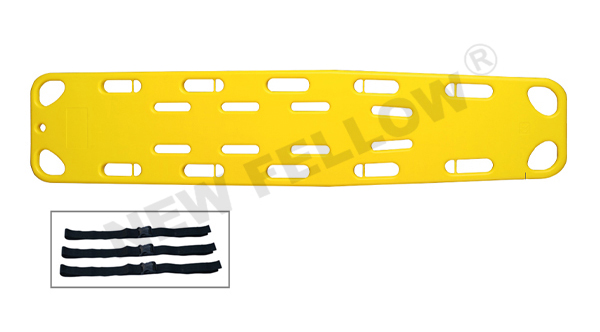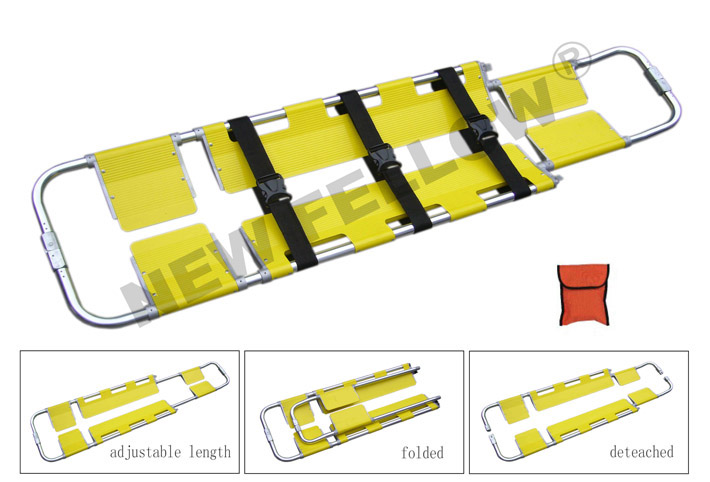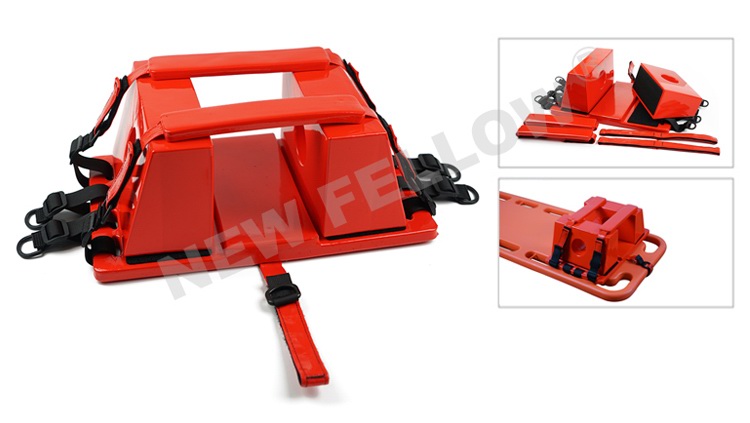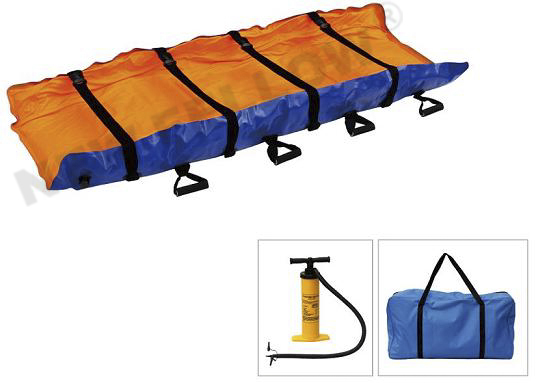How to choose the right stretcher and immobilization during transport of spinal cord injury patients
Trauma patients with underlying spinal injuries present a number of challenges to emergency medical technicians (EMTs) and rescuers when applying prehospital care. However, a very important factor is maintaining the injured person in an immobilized and stable position throughout patient transport.
While it usually takes multiple people (EMTs, firefighters, etc.) to keep a patient immobilized and secure, there are multiple options (stretcher with backboard, etc.) for transporting a patient to the hospital by ambulance.
The Need for Spinal Immobilization
After a spinal injury, a fractured vertebra may become unstable and move in a non-anatomical manner, potentially causing spinal cord injury (broken vertebrae or sharp edges of bone fragments can damage the spinal cord). This potential for injury is why caregivers and EMTs are so concerned about stabilizing the patient's spine when they arrive on the scene.
After the patient is brought to safety, or removed from the vehicle using an extrication device, they are placed in some sort of spinal immobilization device, like a full body splint. Spinal immobilization is also very important for rescuers during extrication and transfer of patients.
Plate Stretcher (Spine Board)

The rigid, long plate spinal immobilization device, also known as a plate stretcher or spine board, has been an important tool for first responders for decades. The prevailing view in emergency medicine is that severely injured patients should be treated as if they had a spinal injury, regardless of the severity of the injury, and that the patient should be immobilized until they are transported to a hospital for treatment from an emergency situation.
Now, "spinal motion restriction," or SMR, has been used along with immobilization to describe minimizing unnecessary spinal motion. Studies have shown that spinal immobilization is very effective in cases of drug or alcohol intoxication, neurological problems (numbness or tingling), or distracting injuries that make neck and spine examinations impossible or unreliable.
The use of a scoop stretcher

The scoop stretcher is one of the innovations in immobilizing patients with spinal injuries. The scoop stretcher is designed to be split in half and placed on either side of the patient. The Scoop Stretcher closes with a scissor-like action, gently scooping up the patient without the need for the "log rolling action" used when placing the patient on a rigid backboard. Most scoop stretchers are adjustable for different body sizes and heights and are collapsible; they are primarily used in ambulances, hospitals and emergency centers.

In some cases, head immobilizers can be used in conjunction with rigid neck collars to minimize head movement. The collar prevents upward and downward movement, while the head immobilizer prevents lateral movement. Head immobilizers use plastic-coated foam blocks and padded straps to stop the patient's head from moving from one side to the other.
Vacuum stretchers (or vacuum mattresses)

Another form of patient transportation is the vacuum stretcher, which is an inflatable cushion that cushions the patient and allows them to be transported in a variety of positions, including supine, bent-knee, or elevated torso positions. This is especially helpful for elderly patients who may not be accustomed to lying flat on their backs, or those with severe back or pelvic injuries.
Vacuum stretchers help reduce the likelihood of further injury to the patient during transportation. In situations where a patient must be transported over long distances, a vacuum stretcher is better suited for spinal immobilization than a long backboard. Most vacuum stretchers are also compatible with X-rays and MRIs, so the patient does not have to be moved unnecessarily.
Patient immobilization: more options than ever before
As research into spinal immobilization increases, it's up to emergency medical personnel in the field to make appropriate decisions based on the information they have. EMTs have more tools to choose from than ever before, and provide services to the injured person on a case-by-case basis.

 Official WeChat
Official WeChat